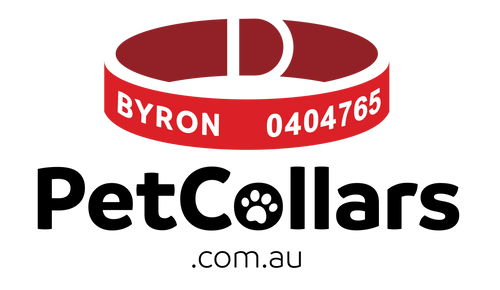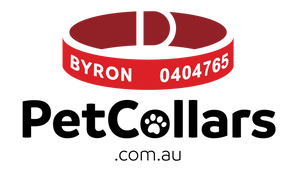
Happiness Dog Guide: Is Your Pup Happy?
Did you know that dogs have the emotional capacity of a 2- to 3-year-old child? This means they can feel joy, fear, and even anger, but they rely on body language to communicate these feelings.
Knowing how to interpret your dog's emotions is crucial for ensuring their well-being and happiness. This blog post will explore how to tell if your dog is happy, the meaning of dog zoomies, and how you can make your dog happier to achieve the ultimate happiness dog level with actions, dog toys, accessories, and more.
Recognising Signs of a Happy Dog

Understanding happiness dog signs is key to fostering a joyful relationship with your pet. When you know what to look for, it becomes easier to ensure your dog is content and thriving. Observing your dog's behaviour and body language helps you help them maintain a happiness dog level, ensuring they live a fulfilling life.
Physical Indicators of a Happy Dog
Happy dogs exhibit specific physical signs that indicate their contentment. These signs are often easy to spot once you know what to look for.
High and Waggy Tail
One of the most obvious happiness dog signs is a high and wagging tail. This signal shows that your dog is feeling joyful and relaxed. A dog happy in their environment will often display this tail behaviour, indicating they are comfortable and at ease.
Floppy Ears
Relaxed ears, not tense or flattened, are another indicator of a happiness dog. When a dog's ears are in a natural, relaxed position, it means they are not feeling threatened or stressed. Instead, they are in a state of contentment and peace.
Relaxed Body Posture
No matter the dog breed, a relaxed body with loose shoulders, soft eyes, and a wiggly demeanour indicates a happiness dog. If your dog seems floppy or "flopped-out," it's a clear sign they are feeling great. Observing your dog's body posture can give you valuable insights into their emotional state.
Behavioural Signs of Happiness in Dogs
Behavioural cues are just as important as physical signs in determining your dog's happiness. These behaviours often reflect a dog’s inner joy and satisfaction.
Playfulness and Zoomies
A happy dog is often playful. The playful bow, where the dog lowers its chest and keeps its rear in the air, is a classic invitation to play. Additionally, dog zoomies, or sudden bursts of energy, are a joyful expression.
Why Do Dogs Get Zoomies?
So, are zoomies a sign of a happy dog? The answer is yes! The zoomies meaning is easily explained: your dog is experiencing pure happiness and joy. These bursts of energy are a natural way for dogs to express their excitement and contentment. A dog displaying zoomies is a perfect example of a happiness dog in action.
Dogs' Uncontrollable Need to Run in Circles Exaplined

One of the most delightful and puzzling behaviours of happy dogs is their uncontrollable need to run in circles, commonly known as zoomies. This behaviour is especially prevalent in puppies and young dogs, but it can occur at any age. The zoomies are typically triggered by moments of high excitement, such as after a bath, during playtime, or when their favourite person comes home.
The zoomies, or frenetic random activity periods (FRAPs), are a sign of a happiness dog releasing pent-up energy and expressing joy. When a dog dashes around the house or yard in seemingly wild circles, it's a way for them to burn off excess energy and excitement. This behaviour is perfectly normal and healthy for dogs, indicating they are happy and well-adjusted.
Make sure your pup is microchipped, and has an identification on them at all times. Our personalised dog collars and leads are a perfect way to secure your dog with your phone number and their name embroidered directly onto the collar. If lost, identification and return are seamless.
If you have an apartment dog, ensuring they have enough space to safely perform zoomies is important. Providing ample playtime and exercise can help manage this energetic burst and maintain a happiness dog level. Understanding why dogs do zoomies and recognising it as a sign of happiness will help you appreciate this quirky and endearing aspect of your dog's behaviour.
Leaning In for Attention
Dogs that lean into you for strokes and cuddles are showing their affection and trust. This behaviour is a sign of a strong bond and contentment. When your dog leans into you, it’s their way of seeking comfort and connection, reinforcing the mutual love you share. This closeness contributes significantly to a happiness dog level.
Signs of an Unhappy Dog
Recognising when your dog is unhappy is just as crucial. Understanding these signs can help you address their needs promptly and prevent potential behavioural issues.
Key Indicators of Unhappiness

Understanding the 3 signs your dog is unhappy can help you address their needs promptly. These signs often indicate that something is amiss.
Low or Tucked Tail
A low or tucked tail often indicates stress or fear. Unlike the high wagging tail of a happiness dog, this posture shows discomfort. It's essential to pay attention to these cues to ensure your dog feels safe and secure.
Tense Body Position
A worried dog will have a tense body posture, shrinking away, holding their head low, and avoiding eye contact. This behaviour suggests that your dog is feeling anxious or threatened, and it’s crucial to identify the cause.
Pinned Back Ears
Ears that are pinned back or flat against the head signal anxiety or stress. Recognising this sign can help you intervene before the situation escalates, ensuring your dog’s well-being and working towards a happiness dog level.
Behavioural Signs of Stress and Anxiety
Behavioural changes can also indicate a dog is unhappy. These signs can help you understand what your dog is experiencing and how to help them.
Turning Away or Hiding
If your dog turns away from you or hides, they might be feeling stressed or uncomfortable. Allow them the space they need to feel secure. Forcing interaction when they are stressed can exacerbate their anxiety, so it’s important to be patient and understanding to help return to a higher happiness dog level.
Signs of Aggression in Dogs

Understanding signs of aggression can prevent dangerous situations. Recognising these signs early can help you manage and mitigate aggressive behaviour.
Key Aggression Indicators
Recognising aggressive behaviour can help keep both you and your dog safe. These indicators often precede more overt acts of aggression.
Stiff Tail and Body
An aggressive dog may have a stiff, straight tail and a rigid body posture. They may also bare their teeth and growl. This body language suggests that the dog feels threatened and is preparing to defend itself, contrasting sharply with the relaxed posture of a happiness dog.
Fixed Eye Contact
An aggressive dog will often make direct, fixed eye contact, signalling discomfort or threat. If you notice this behaviour, it’s essential to de-escalate the situation calmly and carefully to help return to a happiness dog level.
Happiness Dog Guide: How to Make Your Dog Happier
Ensuring your dog's happiness involves understanding their needs and providing a nurturing environment. A happiness dog is a healthy dog, and vice versa.
Physical and Mental Stimulation
Engage your dog in regular physical activities and mental stimulation to keep them healthy and happy. These activities are crucial for their overall well-being and achieving a happiness dog level.
Exercise and Play

Daily walks, playtime, and activities like fetch can significantly contribute to your dog's happiness. Whether you live in a house or have pets in an apartment, ensuring they get enough exercise is crucial. Dogs' uncontrollable need to run in circles, or zoomies, can often be satisfied with sufficient physical activity, contributing to a happiness dog level.
Mental Enrichment
Interactive toys, food puzzles, and training sessions provide mental stimulation that keeps your dog engaged and happy. These activities challenge your dog’s mind and prevent boredom, which can lead to undesirable behaviours. Mental enrichment is a key component in achieving a happiness dog level.
Providing a Safe and Comfortable Environment
A secure environment is essential for a dog's happiness. Ensuring your dog feels safe at home is a key aspect of their overall well-being and contributes to a happiness dog.
Balanced Diet
A nutritious diet tailored to your dog's age and needs supports their overall well-being. A healthy diet contributes to a healthy dog – happy dog. You’re responsible for providing the energy and nutrients they need to thrive and maintain a happiness dog level.
Regular Vet Check-ups
Regular vet visits ensure your dog stays healthy, addressing any issues that could affect their happiness. Preventive care and early detection of health problems are vital for maintaining your dog's quality of life and ensuring they remain a happiness dog. We recommend following Australia’s guidelines for pet healthcare.
Happiness Dog Guide: Tips for Apartment Dogs

Living in an apartment with a dog requires special considerations to ensure their happiness. Apartment dogs can be just as happy as those with larger living spaces, with the right care and attention to maintaining a stable happiness dog level.
Adjusting to Smaller Spaces
Apartment dogs need regular walks and playtime to compensate for limited space. It’s important to create a routine that includes ample physical activity and mental stimulation.
Ensuring Adequate Exercise
Daily activities are crucial for maintaining a healthy dog happy dog, even in smaller living environments. Walks, interactive play, and even indoor games can keep your dog active and content.
Creating a Safe Space
Designate a comfortable area in your apartment where your dog can relax and feel secure. This safe space can be a cosy bed or a designated corner where your dog can retreat and rest.
Building a Strong Bond
Spending quality time (a beach day, a doggie park outing, etc) and showing affection helps build a strong emotional bond, contributing to your dog's happiness. Regular interaction and positive reinforcement strengthen your relationship and make your dog feel valued and loved, ensuring a happiness dog level.
Can Dogs Tell When We Are Happy, Sad, or Angry?

Dogs have an incredible ability to sense human emotions. They can tell when we are happy, sad, or angry through our body language, tone of voice, and facial expressions. This sensitivity to our emotional state is a testament to the deep bond between humans and their canine companions.
Conclusion
In conclusion, understanding and recognising happiness dog signs is essential for fostering a joyful and healthy relationship with your pet. From noticing physical and behavioural indicators to ensuring they receive adequate mental and physical stimulation, there are many ways to keep your dog happy.
Remember, a healthy dog is a dog with high happiness dog level! Design a personalised collar for your pup today to boost their safety and your own happiness!


